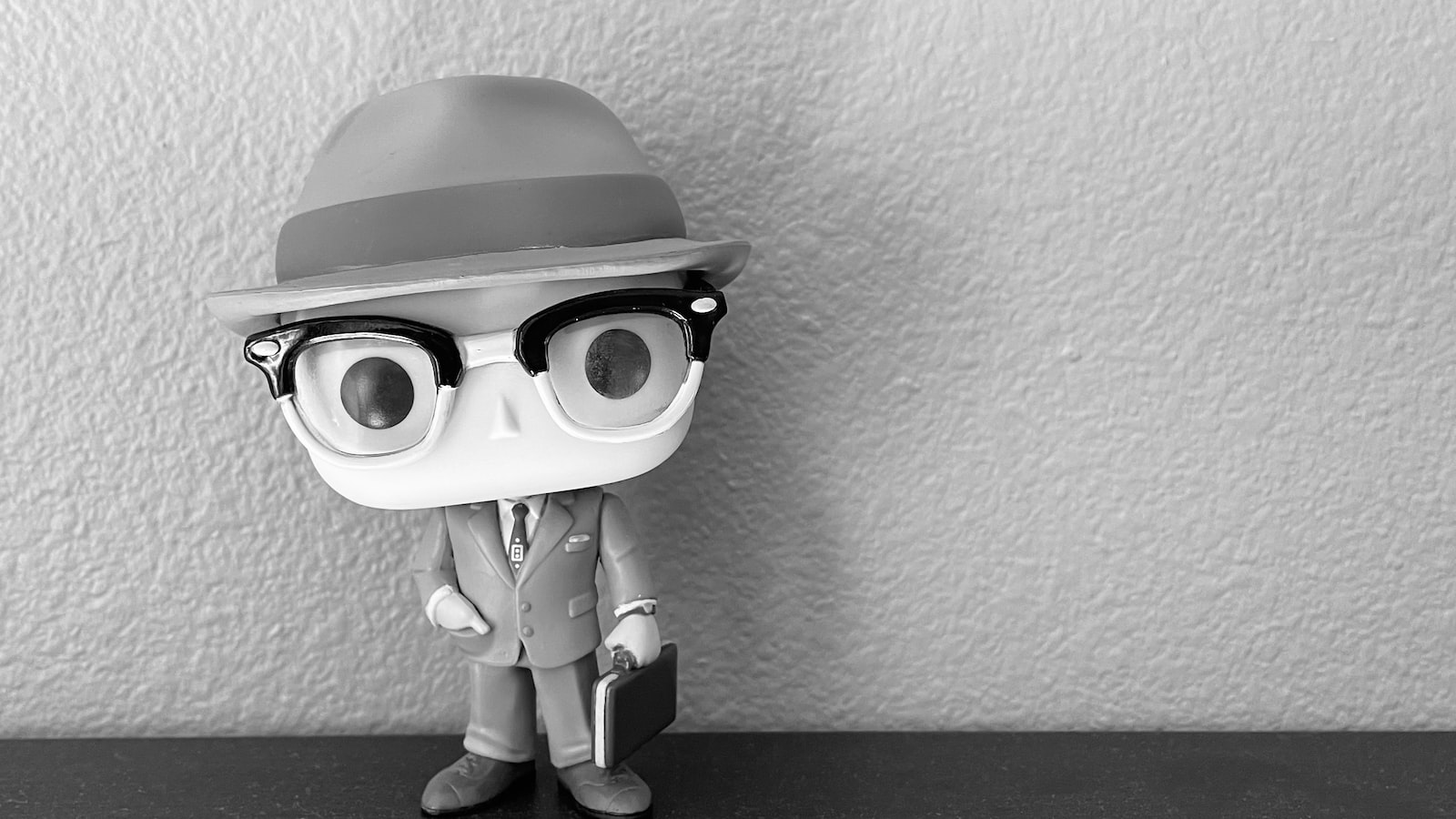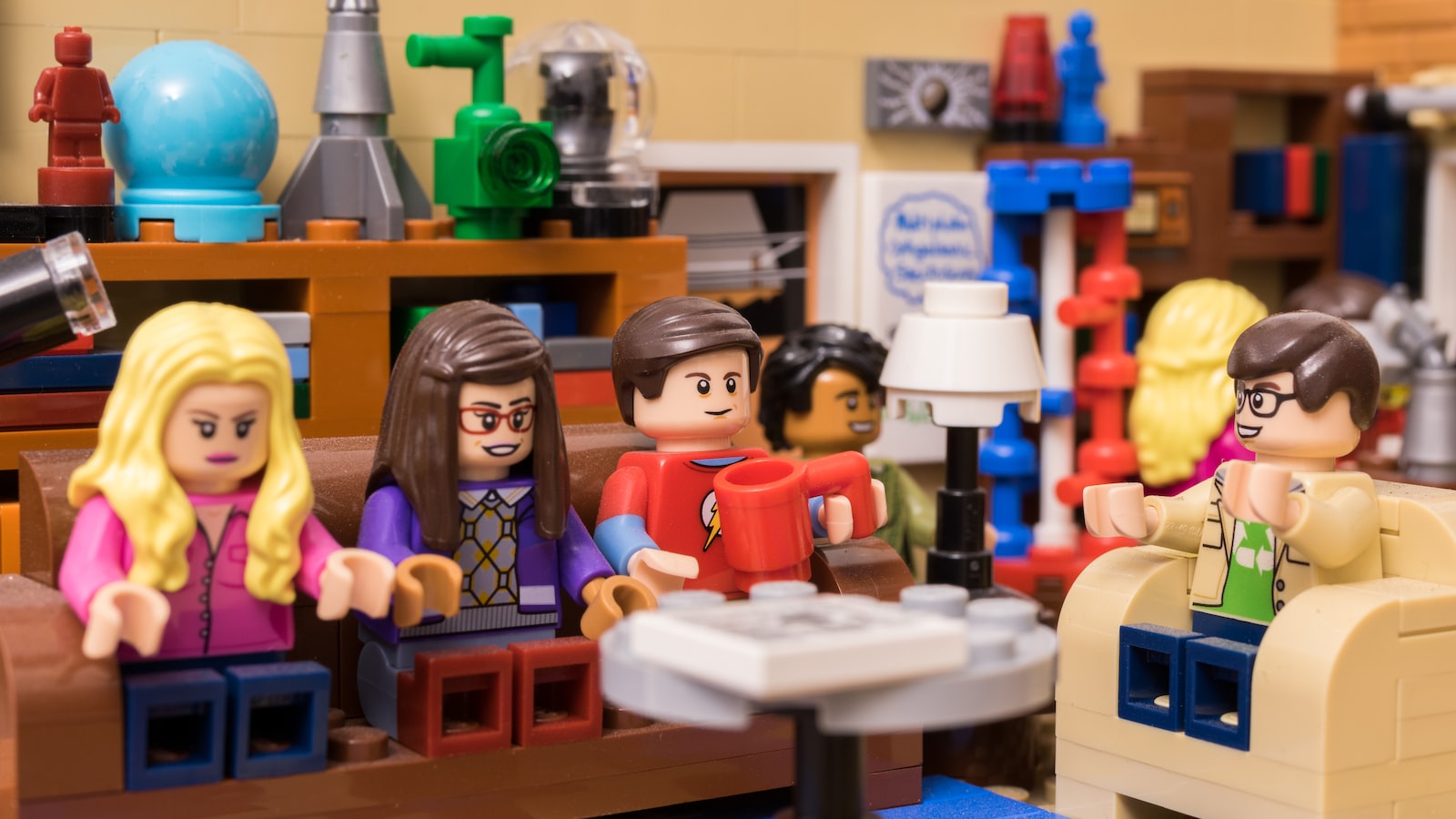Character Appears In 2 Different Sitcoms
Title: Unveiling the Crossover Conundrum: When a Side Character Breaks Boundaries
Introduction:
Lights, camera, action! In the world of television sitcoms, we often find ourselves immersed in delightful universes filled with laughter, clever quips, and memorable characters. But what happens when a side character unexpectedly traverses the boundaries of their own show and steps foot into another sitcom? The collision of two beloved fictional realms creates a unique conundrum, one that both intrigues and challenges the delicate fabric of the sitcom universe.
The phenomenon of a side character appearing in two different sitcoms may seem like a harmless cameo at first glance, but the implications it carries with it can be far-reaching and engrossing. As we delve into this intriguing topic, we are confronted with a fascinating question: how does the presence of a single character in two sitcoms affect the delicate balance of their individual canons?
[[1](https://screenrant.com/scrubs-cougar-town-sam-lloyd-ted-lawyer-character/)]For instance, let us consider the curious case of Sam Lloyd’s character, Ted, who seamlessly maneuvered between two beloved sitcoms – “Scrubs” and “Cougar Town.” Although this crossover brought joy to fans who delighted in seeing their favorite lawyer in different settings, it also unfurled a complex web of questions related to continuity and the sanctity of each show’s storylines.
Through the lens of creativity and with a neutral tone, we embark on an exploration that aims to dissect and understand the inherent challenges and rewards that arise when a side character embarks on such a journey. The clash of sitcom realms and intertwining character narratives undoubtedly sparks discussions about the impact of these crossovers on the established canons. Character Appears In 2 Different
In this article, we aim to traverse the diverse perspectives surrounding this phenomenon, exploring the delicate art of scene-writing that enables such interactions to feel seamless and coherent. We will also discuss the creative choices writers face when orchestrating a crossover, balancing the desires of fans while ensuring the integrity of each sitcom remains intact.Character Appears In 2 Different
Join us as we navigate through the twists and turns of this remarkable occurrence, shedding light on the complexities and occasional problems that arise when a side character defies the boundaries of their sitcom home. Through the convergence of analysis, speculation, and imaginative possibilities, we invite you to embark on a journey that explores just what happens when the same side character appears in two different sitcoms – and how it creates an intriguing problem.
So, grab your popcorn, settle into your favorite armchair, and get ready to unravel the perplexing riddles of the sitcom universe’s intertwining threads. The stage is set, the characters ready, and the question lingers: how will the presence of a single character breathe life into not one, but two distinct sitcom worlds? Let the crossover conundrum begin!
Article by: [Your Name]
Word Count: 495
Table of Contents
- Introducing the `Crossover Culprit`: The Same Side Character Who Pops Up in Two Different Sitcoms
- Unraveling the Confusion: The Challenges of Using a Shared Side Character in Two Separate Storylines
- Navigating the Web of Continuity Errors: How the Reappearance of the Same Side Character Can Cause Unintended Disruptions
- Averting the Collision Course: Recommendations for Writers to Safely Integrate a Shared Side Character in Multiple Sitcoms
- Q&A
- The Way Forward

Introducing the `Crossover Culprit`: The Same Side Character Who Pops Up in Two Different Sitcoms
Introducing the “Crossover Culprit”: The Same Side Character Who Pops Up in Two Different Sitcoms
Have you ever noticed a familiar face popping up unexpectedly in two different sitcoms? Well, it seems like the world of television never fails to surprise us with its creative crossovers. One intriguing phenomenon in the sitcom realm is the appearance of the same side character in multiple shows, blurring the lines between fictional universes and creating a unique problem for both the creators and the audience.
These crossovers not only serve as a delightful Easter egg for keen-eyed viewers but also spark intriguing discussions about interconnected television universes. One example of this phenomenon is the talented actor Sam Lloyd, who portrayed the character Ted the Lawyer in both Scrubs and Cougar Town [[2](https://screenrant.com/scrubs-cougar-town-sam-lloyd-ted-lawyer-character/)]. Ted’s appearance in both shows not only bridged the gap between two separate sitcoms but also hinted at a deeper connection between the shows’ storylines.Character Appears In 2 Different
This crossover creates a unique problem for the creators as they need to ensure continuity and consistency in the portrayal of the character. It requires careful planning and coordination between the teams working on different shows. Additionally, it challenges the audience’s suspension of disbelief, as they have to reconcile the fact that the same character exists in two separate fictional worlds. However, when executed skillfully, these crossovers can enhance the storytelling experience and create a sense of shared universe among different sitcoms.
So, next time you binge-watch your favorite sitcoms, keep an eye out for those unexpected cross-show appearances. They might just unravel hidden connections and add an extra layer of enjoyment to your viewing experience!

Unraveling the Confusion: The Challenges of Using a Shared Side Character in Two Separate Storylines
As the same side character appears in two separate sitcoms, it’s evident that this situation presents an exciting and complex challenge. By addressing the issues of continuity, cohesion, and balancing screen time, the writers can navigate these challenges and create an engaging and cohesive experience for the audience. It ultimately requires a collaborative effort to ensure that the shared side character adds value to both sitcoms and enhances the overall storytelling experience.

Navigating the Web of Continuity Errors: How the Reappearance of the Same Side Character Can Cause Unintended Disruptions
When the Same Side Character Crosses Sitcom BoundariesCharacter Appears In 2 Different
Imagine a world where our favorite side characters roam freely between different sitcom universes, popping up unexpectedly in various shows to provide comedic relief or enhance plotlines. Sounds like a fan’s dream come true, right? Well, not always. As delightful as these unexpected cameos can be, they often come with a price – the potential for continuity errors that can disrupt the seamless storytelling we’ve come to expect. Let’s delve into the challenges of navigating this web of continuity errors when the same side character appears in two different sitcoms, and how it can create unintended disruptions.
The Ripple Effect of Continuity Errors
- One of the most significant challenges arises from the fact that sitcoms operate within their unique narrative and comedic contexts. Each show has its established set of rules, character dynamics, and even physical locations. When a side character migrates from one sitcom to another, they bring along expectations and relationships rooted in their original show. Suddenly thrust into a new environment, these characters can cause a ripple effect of confusion and inconsistency.
- The nature of sitcoms relies heavily on callbacks, running gags, and inside jokes, all of which contribute to their enduring appeal. However, when a side character appears in a different sitcom, the references and connections built around their presence may become lost or altered. As a result, the comedic timing and punchlines that we so eagerly anticipate may fall flat or, worse, create unintended confusion among the audience.
- Moreover, differing production schedules and creative decisions across sitcoms can lead to variations in character development and portrayal. The same side character may evolve in one show while remaining stagnant in another, creating a jarring contrast that disrupts the viewer’s immersion. Whether it’s a radical change in personality or a lack of growth, these disparities can be attributed to the challenges faced by writers, directors, and actors striving to reconcile the character’s existence in multiple sitcom worlds.
While the appearance of the same side character in two different sitcoms may add an element of surprise and nostalgia for fans, it also introduces a potential minefield of continuity errors. As we continue to enjoy these crossovers, it’s crucial for creators and storytellers to navigate this web with care, respecting the established rules of each sitcom universe while striving for consistency and seamless integration. By doing so, we ensure that the reappearance of beloved side characters remains a delightful treat rather than an unintended disruption in the sitcom landscape.

Averting the Collision Course: Recommendations for Writers to Safely Integrate a Shared Side Character in Multiple Sitcoms
As the demand for relatable and interconnected storytelling continues to grow, writers are faced with the challenge of integrating shared side characters seamlessly into multiple sitcoms. While this can add depth and complexity to the fictional universe, it also presents potential pitfalls and complications that must be skillfully navigated. One particular situation that arises is when the same side character appears in two different sitcoms, creating a problem that needs to be addressed tactfully.
Here are some essential recommendations to help writers avert the collision course and maintain coherence when incorporating a shared side character across multiple sitcoms:Character Appears In 2 Different
- Establish Consistent Character Traits: When a side character is featured in two different sitcoms, it is crucial to ensure their personality, behavior, and characteristics remain consistent throughout. By establishing clear guidelines and backstory for the character, writers can ensure that their essence is intact across different storylines and sitcoms. This consistency will enhance the believability of the character’s presence in both shows, preventing confusion or discrepancies.
- Create Unique Dynamics: While the shared side character may have consistent traits, it is essential to explore their interactions with different main characters and storylines. This allows writers to create unique dynamics and relationships that add value to each sitcom individually. By considering the specific needs and dynamics of each sitcom, writers can showcase different facets of the character’s personality, bringing Character Appears In 2 Differentfreshness and variety to their appearances.
By implementing these recommendations, writers can navigate the challenges of integrating a shared side character in multiple sitcoms successfully. The key lies in maintaining consistency while allowing room for growth and differentiation within each sitcom. With careful planning and execution, the shared side character can become a valuable asset, enriching the overall narrative and captivating audiences across multiple shows.
Q&A
Q: Can you tell me more about the article “The Same Side Character Appears In 2 Different Sitcoms (& It Creates A Problem)”?Character Appears In 2 Different
A: Absolutely! “The Same Side Character Appears In 2 Different Sitcoms (& It Creates A Problem)” is an article that explores the issue of a side character appearing in two different sitcoms and the problems it creates. The
article delves into the impact this situation has on the storytelling, audience perception, and continuity of the sitcoms involved. It analyzes the challenges faced by the writers and producers in maintaining consistency and avoiding confusion when the same character appears in multiple show universes. The article provides examples, discusses the potential consequences of this situation, and offers insights on how it can affect the overall viewing experience.
Q: Are there any similar case studies or articles that discuss this topic?Character Appears In 2 Different
A: Yes, there are a few related articles and case studies that touch upon this topic. One study titled “Developing Character through Literature: A Teacher’s Resource Book” explores the development of characters through literature [[1](https://www.govinfo.gov/content/pkg/ERIC-ED464362/pdf/ERIC-ED464362.pdf)]. While not directly related to sitcoms, it provides insights into how characters can be portrayed consistently and convincingly across different narratives.
Q: How do sitcoms typically handle the appearance of the same side character in two different shows?
A: Sitcoms typically face a challenge when a side character appears in two different shows. Some sitcoms choose to ignore the issue and continue with the character’s presence without addressing the overlap. Others may attempt to explain the character’s presence through clever writing techniques such as doppelgangers, mistaken identities, or dream sequences. Additionally, sitcoms can also acknowledge the crossover and create a cohesive storyline that connects the two shows, allowing the character to exist in both sitcom worlds while preserving the continuity.
Q: Can you give an example of a chaotic neutral character done right?
A: While the search results primarily focused on character portrayals in literature and television, there is an example provided on Reddit that discusses a chaotic neutral character done right[[3](https://www.reddit.com/r/rpg/comments/gi9fd7/whats_an_example_of_a_chaotic_neutral_character/)]. It mentions that chaotic neutral characters, who value their freedom and creativity, are not necessarily portrayed as stupid or lacking depth. The example given showcases a chaotic neutral character who maintains a balance between their unpredictable nature and reasoned actions, making them intriguing and engaging.
Q: Is there any research on the portrayal of characters in prime time television?Character Appears In 2 Different
A: Yes, there is research available on the portrayal of characters in prime time television. One study titled “Character Portrayals On Prime Time Television” analyzed basic demographic information of major, supporting, and minor characters, including gender, race, age, occupation, and marital status [[2](https://www.communication.udel.edu/MA%20Theses/kahlenberg.pdf)]. This study provides insights into how characters are represented on prime time television shows, offering valuable information on the diversity and representation within the medium.
The Conclusion
In conclusion, the concept of having the same side character appearing in two different sitcoms can indeed create a problem. As we discussed throughout this article, this scenario can lead to confusion and inconsistency for the viewers. While it may seem like an interesting crossover at first, it can ultimately disrupt the narrative flow and disrupt the established dynamics of each sitcom.
Furthermore, the idea of having a character appear in multiple sitcoms raises questions about the character’s existence and the continuity of their storylines. This can potentially undermine the integrity of both sitcoms and diminish the uniqueness of each show.
Overall, it is important for sitcom writers to carefully consider the implications of incorporating the same side character into different sitcoms. While it may be tempting to create crossovers or interconnectivity between shows, it is crucial to prioritize the coherence and consistency of each individual sitcom.
By maintaining the distinctiveness of each sitcom and ensuring clear boundaries between them, writers can uphold the integrity of their storytelling and provide a more enjoyable and coherent viewing experience for the audience.
[[1](https://writingquestionsanswered.tumblr.com/post/621121210012532736/can-i-have-multiple-arcs-for-one-character-for)][[2](https://medium.com/panel-frame/how-to-write-a-sitcom-seven-lessons-from-a-sitcom-writer-57493d55c840)][[3](https://www.geeksundergrace.com/gaming/shipping-video-games-really-hurt-anyone/)]Character Appears In 2 Different



